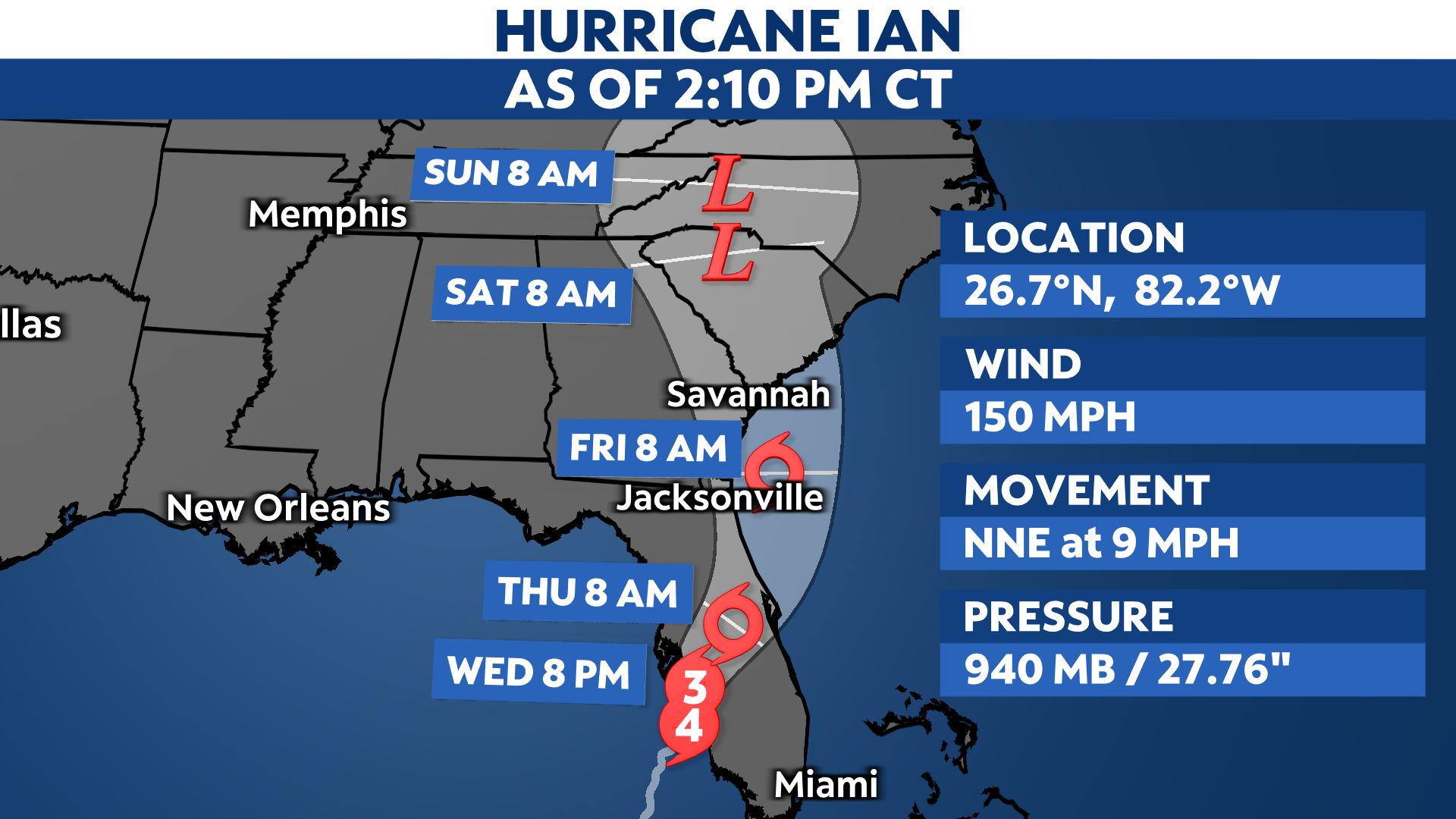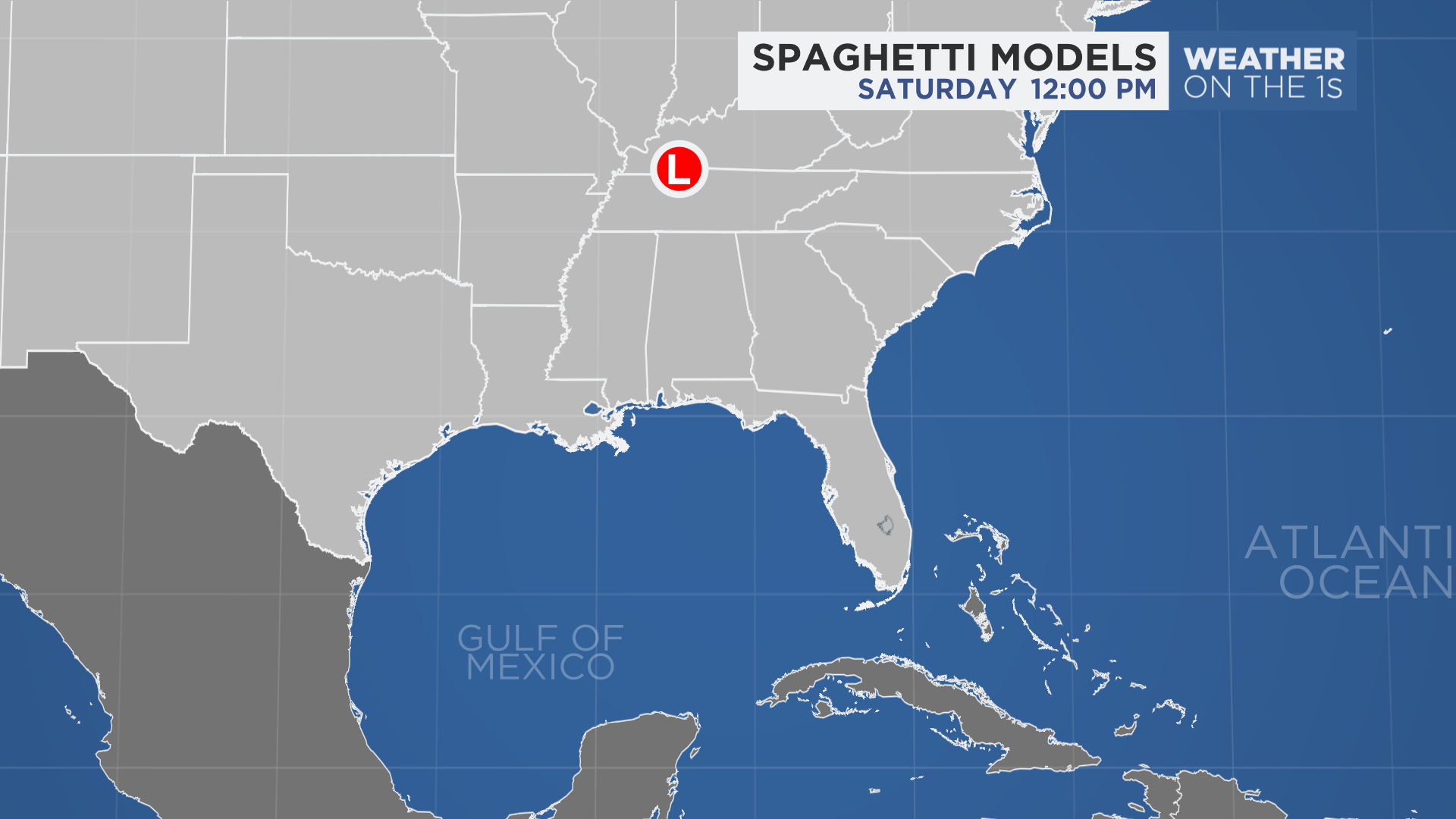Hurricane Ian has made landfall in southwest Florida. It moved inland early Wednesday afternoon in Cay Costa, Fla. with max winds of 150 mph.
Along with high-end Category 4 Hurricane winds, Ian will continue to bring catastrophic impacts, including life-threatening storm surge, and coastal and inland flooding to the Florida peninsula.
Increasing wind shear upon landfall could result is some fluctuations in intensity prior to moving over, but it will remain a major hurricane. Hurricane-force winds are expected to begin in southwest Florida on Wednesday morning.
Ian is the first hurricane to make landfall in the continental U.S. this year. It will continue to move inland and northeast across the Florida peninsula through Thursday, slowly weakening into a tropical storm by Thursday.
Ian will continue to batter Florida’s Gulf Coast with hurricane conditions. Places near Captiva and Sanibel, as well as some of the barrier islands, have already reported wind gusts near and over 100 mph, where other places including Fort Myers Beach are reporting dangerous storm surge, up to 12 to 18 feet inundation in spots.
Along with catastrophic winds and storm surge, Ian will bring heavy rainfall, which could lead to significant flooding and rainfall totals up to 15 to 20 inches with locally higher amounts.
Hurricane and tropical storm conditions will continue to spread inland across the rest of the peninsula through Thursday.
Hurricane Warnings remain in effect for a good portion of the Florida Gulf Coast, extending inland to parts of Central Florida. Tropical Storm Warnings and Watches are in effect for the rest of the peninsula, the Florida Keys and along the coasts of Georgia and South Carolina.
Parts of the Bahamas are also under a Tropical Storm Warning.
In addition to the strong winds, storm surge will also be a concern for parts of Florida’s Gulf Coast, as well as the northeastern Florida coast on the Atlantic up to South Carolina.
Parts of southwest Florida will be inundated with high water levels. Potential storm surge could reaach as high as 12 to 16 feet above ground level from Englewood to Bonita Beach, Fla. North of Ian’s center, surge levels will be lower.
A Storm Surge Warning remains in effect along most of Florida’s west coast, as well as Florida’s Atlantic coast for the Flagler/Volusia County line to the mouth of the St. Mary’s River, and the St. Johns River.
A Storm Surge Watch is in effect for the Florida Keys, Florida Bay and the mouth of St. Mary’s River to South Santee River.
Along with all the other impacts, strong thunderstorms embedded in Ian’s outer bands could spin up tornadoes. The threat will spread up the peninsula as the hurricane moves north on Wednesday.
Extremely heavy rain will lead to flooding. Some areas could receive more than a foot of rain. In those areas, damage from the flooding may be severe. River flooding will be major, possibly breaking records in some locations.
Ian is on track to make landfall in southwest Florida. It has continued to shift south and east since the weekend, pushing the location for landfall farther south of Tampa Bay.
Even though the southern track is better news for Tampa and the west-central Florida coast in regards to top winds and storm surge, impacts can and do occur outside the forecast cone.
Ian’s center may move back over water before curving back toward the Carolinas.
Spaghetti models or plots show a series of individual computer forecast models together on one map. They are useful to give insight into whether multiple models are in agreement on the path of the storm but they do not address the storm’s forecast intensity, winds, flooding and storm surge potential or other data. Tap here for more details on how to best use these models.
Ian’s history
Ian became the ninth named storm of the 2022 Atlantic hurricane season on the evening of Sept. 23. Even though it was slow to strengthen, Ian underwent rapid intensification once it become a hurricane on Monday.
Ian made landfall as a major hurricane just southwest of La Coloma, a town in the Pinar del Rio Province of Cuba around 4:30 a.m. on Tuesday morning.
Ian weakened slightly after passing over western Cuba, but still maintained its major hurricane status as it moved north into the Gulf. After completing an eyewall replacement cycle Tuesday night, Ian became a Category 4 hurricane early Wednesday morning.
It made landfall in Cayo Costa in southwest Florida on Wednesday afternoon as a strong Category 4 Hurricane with max winds of 150 mph.
Elsewhere in the Atlantic, there is one other disturbance with potential to develop.
See how the 2022 Atlantic hurricane season has gone so far.









